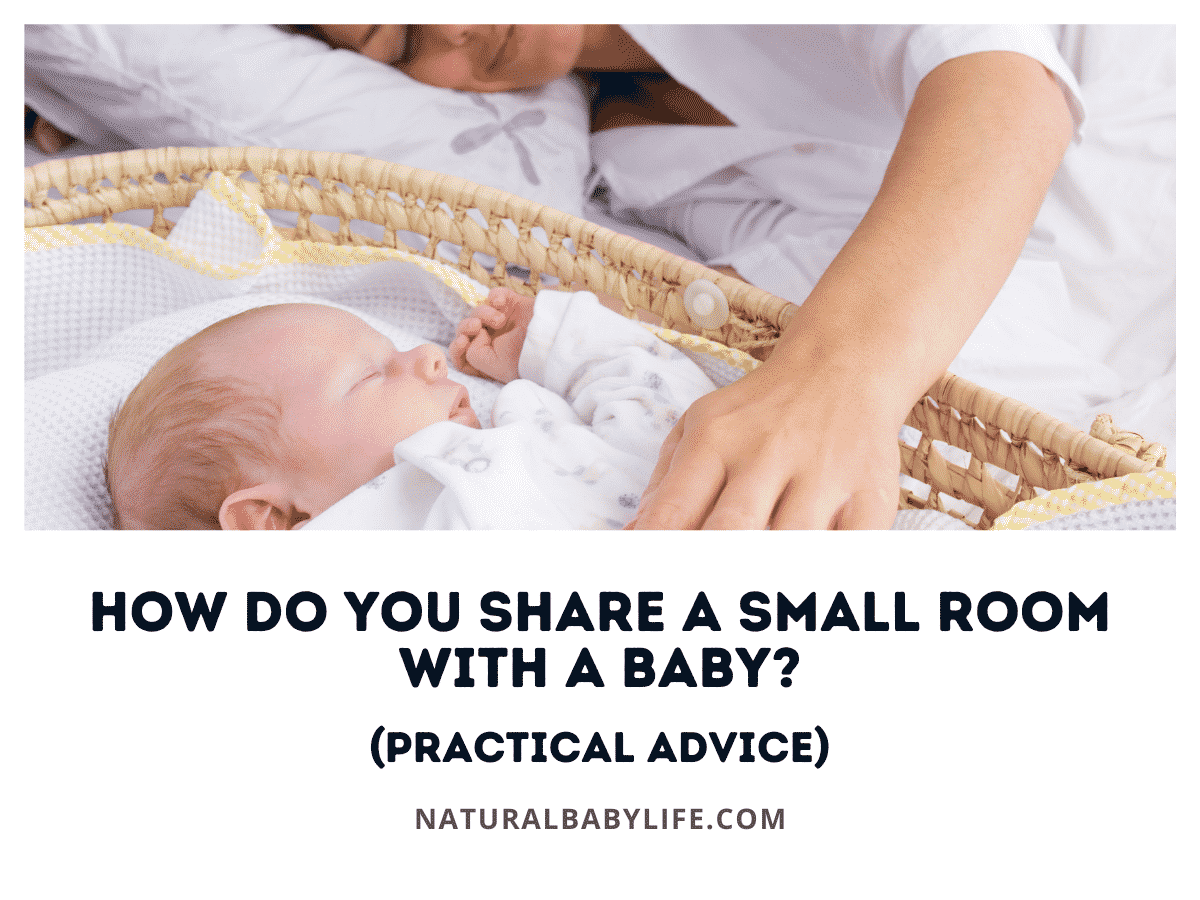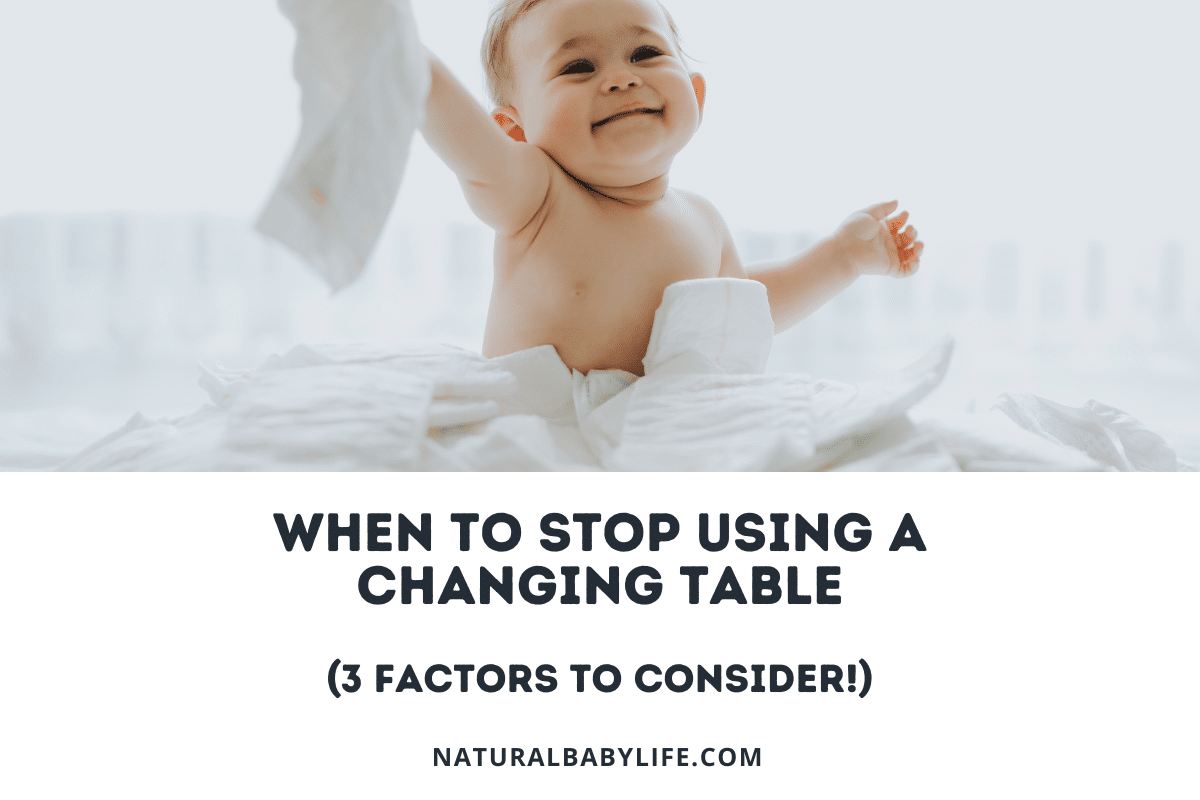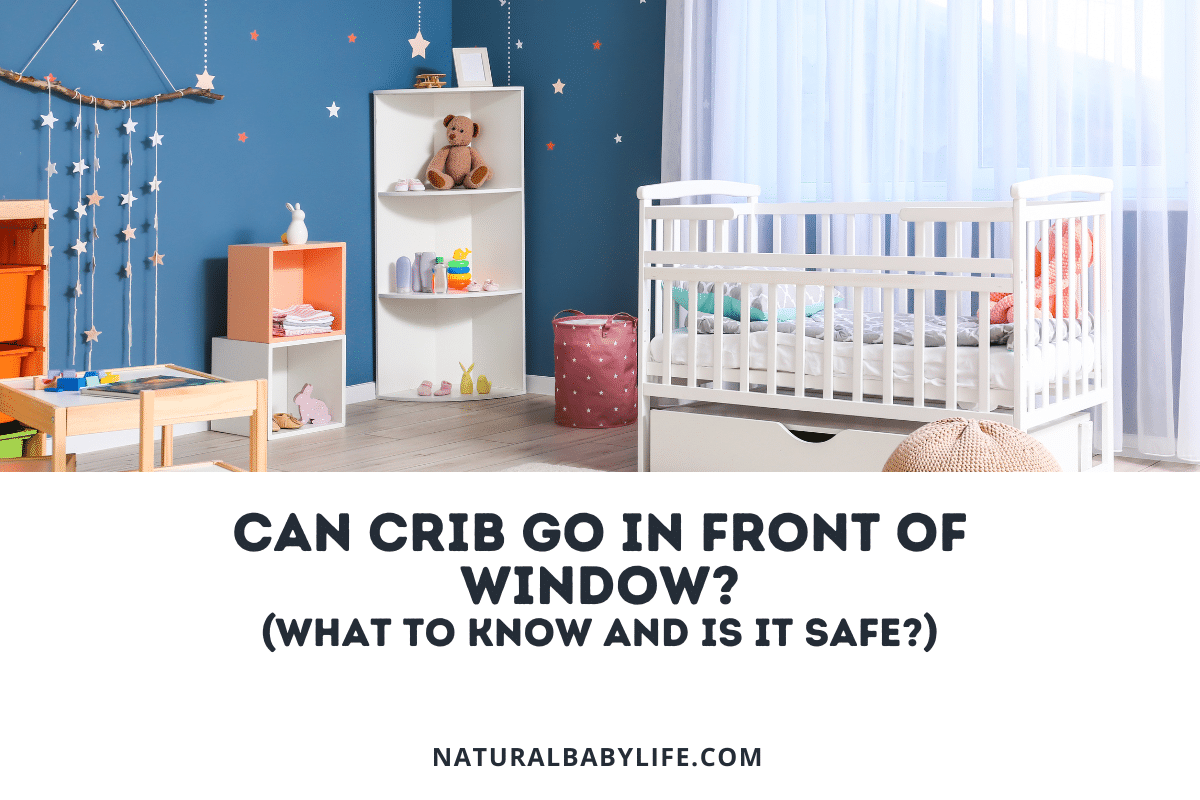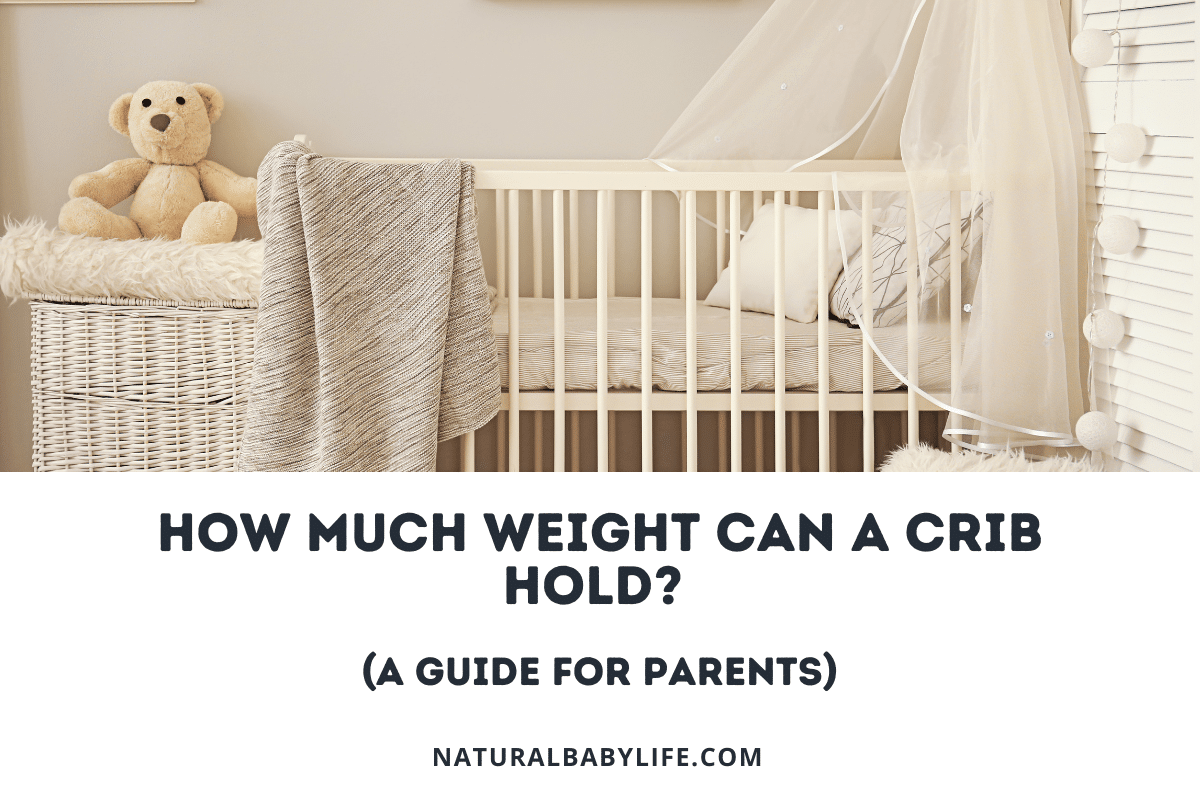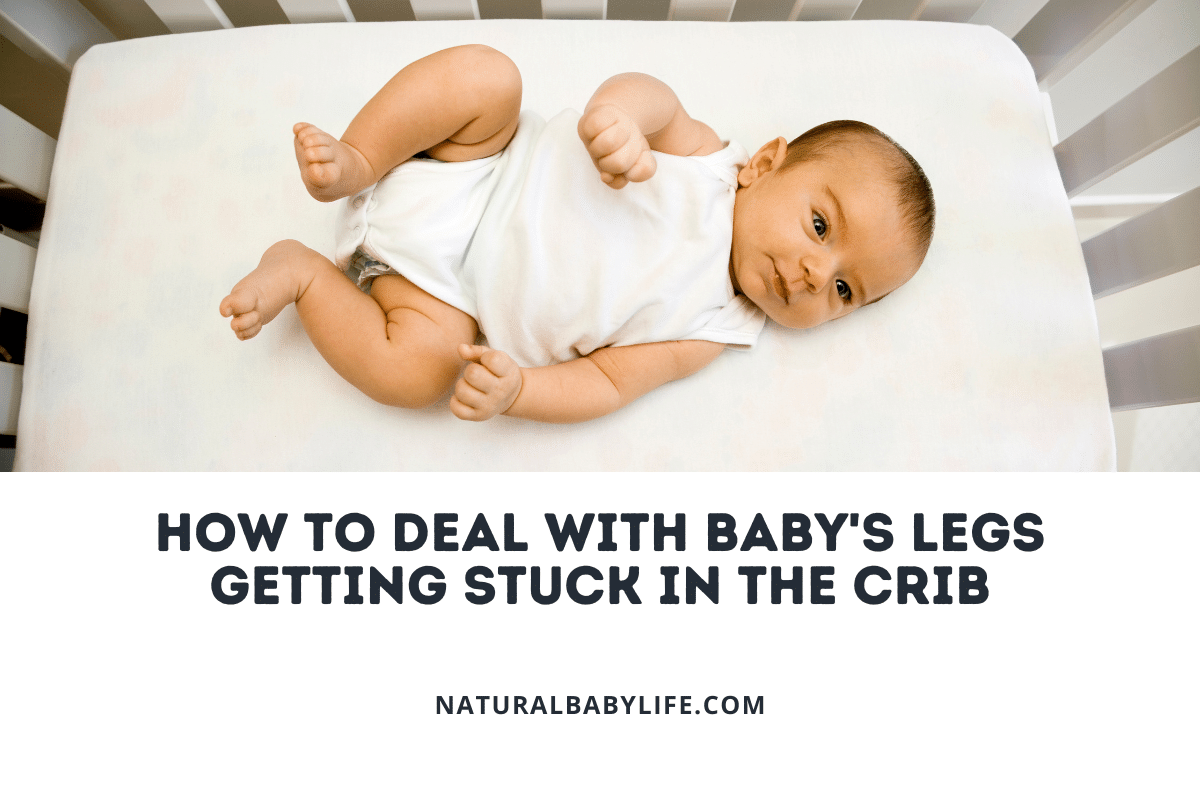Sharing a small space with a baby is not only possible but is efficient. Having a small room with a baby can be cozy, comfortable, and enjoyable.
Create room for your baby in a small room by choosing a mini crib, portable crib, or bassinet for them to sleep in because they are easy to move around and take up less space. Use existing furniture to store baby items or double as a changing table and utilize unused areas such as wall space and under beds for storage and organization.
For a dozen helpful tips on how to share a small space with your new baby, keep reading!
Table of Contents
How to share a small room with a baby
Sharing a small room with a baby doesn’t have to be complicated. Rest assured, there is plenty of space for the baby.
Since a baby doesn’t need many things, this is a benefit when sharing a small room with a baby. There are simple adjustments that can be made to make sharing a room comfortable. We’ve compiled a list of practical tips on sharing a room with a baby.
The best ways to share your tiny room with a baby are to:
- Dedicate a space just for the baby
- Skip the changing table
- Choose a compact crib or Pack and Play
- Decorate with noise-reducing items
- Share your closet
- Add changing stations around the house
- Make clever use of vertical space
- Give your baby a drawer in your dresser
- Appropriate unused spaces for the baby
- Hang curtains for privacy
- Reclaim the space under your bed or the crib
- Remove closet doors
Dedicate a space just for the baby
Help a small room feel less crowded by creating zones for yourself and for your baby.
Dedicating a space just for the baby can be thought of as creating a “mini-nursery.” Place a rocking chair next to the crib to create a cozy tiny nursery. A small lamp on an end table will provide the ambiance needed for the middle of the night feedings.
While keeping the integrity of the parent’s room, having a dedicated space for the baby makes the sharable space enjoyable.
Skip the changing table
While a changing table is a mainstay in many nurseries, it’s not needed.
Skipping the changing table will save you room from extra bulky furniture. Add a changing pad to the top of a parent’s dresser, or keep a changing mat around and lay the little one out on your bed.
This Entyle travel changing pad is leakproof, easy to clean, and cute enough that you won’t mind keeping it out when it’s not in use. Plus, it’s pretty inexpensive, so you can pick up two and have one to use and one to clean.
If you don’t want to buy a changing pad, you lay your little one out on a bathroom towel. Since that won’t be waterproof, make sure you fold it up just in case!
Choose a compact crib or pack and play
Modern cribs can be beautiful and practical – some will even grow with your baby and keep be used throughout your child’s life – but your newborn will be just as happy in a smaller space.
To save space when sharing your room, consider one of these instead of a full-size crib:
- Bassinet – A bassinet is a safe option for co-sleeping with a newborn. The Ronbei Bedside Bassinet hooks onto your bed so you can easily reach your baby in the middle of the night, and the mesh side allows for ventilation. Keep in mind that bassinets are only helpful for the first six months.
- Compact crib – A compact crib provides many of the benefits of a full-size crib and is held to the same safety standards. While a compact crib will not be convertible as your child grows and will likely have fewer mattress height options than a larger crib, it is large enough to be comfortable and perfect for small rooms or as a backup at grandma’s house. This folding mini crib from Delta is a great-looking and high-quality choice.
- Pack and Plays – A space-saving pack and play offers a bed for the baby without taking up a ton of space, plus it’ll do double duty as a playpen. For a basic play yard, you can’t go wrong with a Dream on Me Nest Portable Play Yard, but you can also find versions with more features. This Graco Pack and Play on the Go is very popular and includes a full-size bassinet insert for your newborn.
Before deciding which crib alternative is suitable for you, create the baby zone in your room and consider how much space you’ll need and how long your baby will be sleeping there. I suggest visiting a store like Buy Buy Baby, where you can see the play yards set up to get an accurate idea of how you’d be interacting with your choice.
Decorate with noise-reducing items
When you’re sharing a small space, decor choices are incredibly important – too little and you run the risk of making the room feel empty and joyless, too much, and suddenly you’re cramped and fighting for space.
Make your decorations do double-duty when sharing a small room with your baby. While it’s okay to have a few items that make the space feel homey and lived in, most of the accessories should be functional as well as attractive, and noise-reducing items will help your baby sleep better and relieve a little bit of the stress of late-night cries.
The best options for adding or reducing noise in the nursery are:
- White noise (or other noise) machines – A white noise machine will mimic soothing sounds for the baby while the baby sleeps. This one from VTech is adorable and casts a gentle glow.
- Rugs or other ground covering, especially for hardwood or tile floors – Rugs add an extra layer of buffer for noise and can make the floor more inviting and comfortable for your little one.
- Longer, heavier curtains – Attaching fabric to the ceiling and wall will soften sounds for the baby. The curtains will add a classy look while dampening harsh noises.
Share your closet
Sharing your closet with a baby is easy.
Adding a few lower placed rods to hang the baby’s clothes gives extra storage. Since the baby won’t need much space, clearing some closet room should be easily accomplished. The bonus of baby clothes is their size. Since baby clothes are small, they take up less room.
A small organizer with drawers (like this one) can fit under the parents’ clothes to act as a mini-dresser for the baby.
Add changing stations around the house
Add changing stations around the house to have easy access to changing the baby.
A caddy with diapers and wipes can be placed nearly in every room. Having changing stations throughout the house eliminates the need for a changing table in the shared room.
It will be convenient to have multiple places to stop throughout the house. This will save time from walking through the house to use one changing table.
Make clever use of vertical space
Use vertical space to store items.
Vertical space is readily available in most rooms. Place shelves to hold things. Parents can even hang baskets and totes to offer a different storage solution. Attach rods to hang baby’s clothes or blankets in a similar way one would hang shelves.
Additional racks and rods can be added as needed.
Give your baby a drawer in your dresser
A baby doesn’t need a full-sized dresser.
Parents can minimize the clutter from their own dresser by dedicating a few drawers for the baby. The baby should only need a couple of drawers at most. Sharing a dresser will allow easy access to the baby’s clothes.
Repurpose a honeycomb-style underwear or sock organizer for baby’s bodysuits and other small clothing to make it easier to find an outfit.
Appropriate unused spaces for the baby
Spaces you have struggled to find uses for may be perfect for your baby!
Do you have a bay window that isn’t big enough for a comfy chair or a reading nook you just don’t have time to use anymore? Consider putting your baby’s crib or a little play area there instead.
Shelves or tension rods to hang clothes on can be added to small corners or alcoves to maximize storage and save space. Getting creative with these spaces can be highly beneficial.
Hang curtains for a privacy
Sharing a room with a baby is a joyful experience. For those who want some privacy, hanging curtain dividers between the baby and the parents is a great solution.
Curtains for a divider are a quick fix for separation, and curtains don’t take the same amount of space as a tall regular divider but offer the same amount of privacy. Plus, they can help with noise reduction!
If curtains can’t be used, try adding another type of divider. Use furniture as a way to divide the room for some extra privacy.
Reclaim the space under your bed or the crib
Under the bed or crib storage gives a place for all the things that need to be put away.
Many people ignore the space under their bed, but that can be a perfect place for out-of-season clothing items and folded bedclothes.
The Sterilite 60-Quart Underbed Box is clear with a solid lid latch and wheels, making it a perfect option for most people.
Remove Your Closet Doors
Removing the closet doors sounds like an odd solution, but it’s worth the work.
If you are considering putting your baby’s crib in the closet, taking off the closet doors is necessary. It can also make fitting and accessing organizers more convenient if you store baby’s clothing or diapers there.
Most closet doors are easy to remove and can be safely stored until you’re ready to replace them. If you don’t have a storage area, consider using the detached door as decoration (make sure it can’t fall on anyone!).

